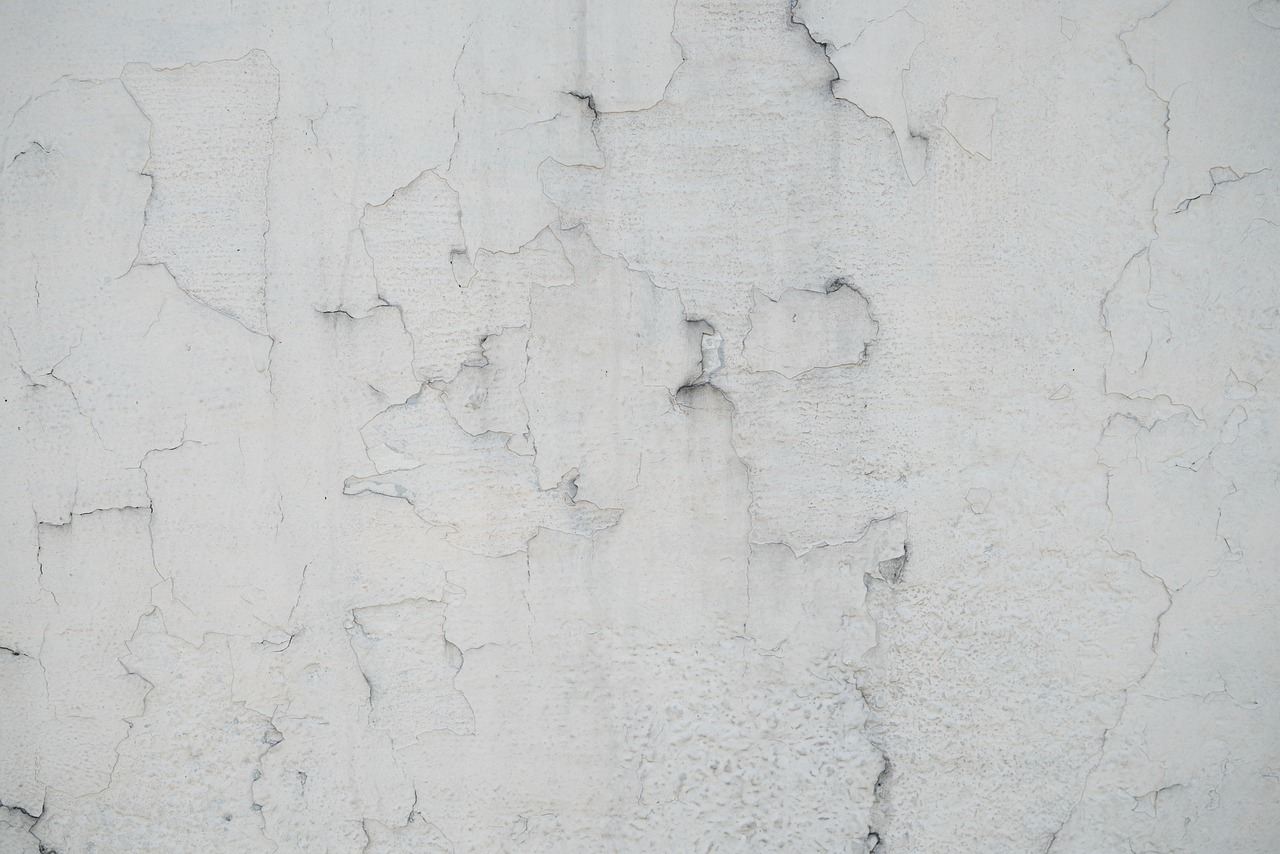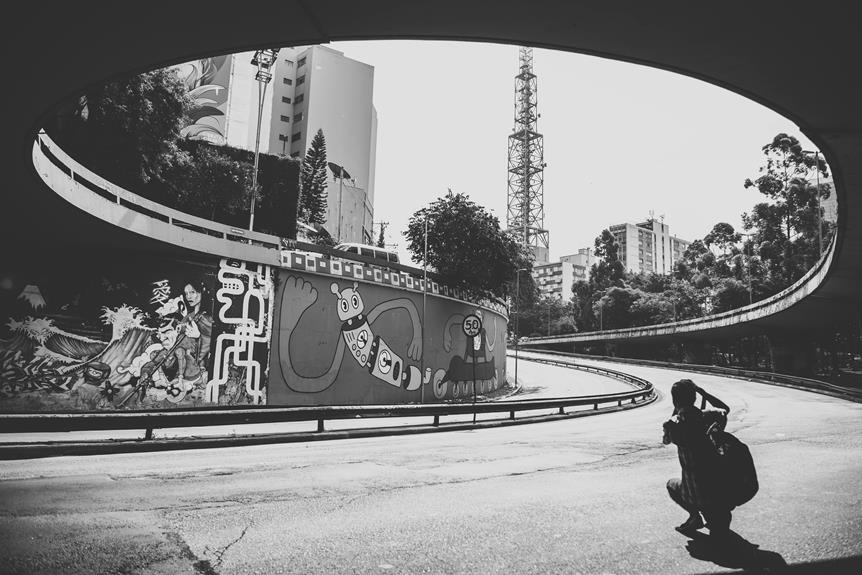Typography Art

Typography art reveals the secrets of transforming text into striking visual designs. Rooted in ancient stone etching, it evolved profoundly with Gutenberg’s printing press and modern designers like Tschichold. Today, styles range from minimalist to maximalist, funny to inspirational, crafted globally. Create impactful designs by balancing text and imagery, using colours to evoke emotions, and strategically placing fonts and images. Choosing the right fonts enhances both readability and aesthetics, with trends like handwritten and vintage adding flair. Mastering techniques like contrast and alignment guarantees your typography art resonates deeply. Want to discover more secrets of transforming text into visual masterpieces?
Key Points
- Typography art blends text and imagery to create visually compelling designs that communicate messages effectively.
- Popular styles include minimalist, maximalist, playful, and inspirational themes, each offering unique visual aesthetics.
- Key design principles like balance, colour, and strategic element placement enhance the impact of typography art.
- Choosing the right fonts and pairing them thoughtfully is crucial for readability and cohesive design.
- Effective typography art uses visual hierarchy techniques to guide the viewer’s eye to important elements.
History of Typography Art
Typography art’s history stretches back to ancient civilizations, where Greeks and Romans etched letters into stone. These ancient influences laid the groundwork for typography’s evolution.
Fast forward to the 15th century, and Johannes Gutenberg’s printing press revolutionized the art, making mass printing a reality. This pivotal moment marked the beginning of typography’s journey from stone to paper.
In the 20th century, designers like Jan Tschichold and Herb Lubalin pushed the boundaries, introducing new styles and principles. The digital age further transformed typography, with software like Adobe Illustrator enabling intricate, contemporary trends.
Typography art has always blended design, language, and artistry, continuously evolving to captivate and communicate effectively in every era.
Popular Typography Styles
Explore the world of popular typography styles where minimalist designs meet maximalist expressions, each bringing unique charm to any space. Delve into typography trends and creative expressions that define modern interpretations of typography art. Minimalist prints feature clean lines and sans-serif fonts, focusing on single words or phrases. Maximalist posters, on the other hand, are bold, using a variety of fonts, colours, and sizes.
| Style | Characteristics |
|---|---|
| Minimalist | Clean lines, simple designs, sans-serif |
| Maximalist | Bold, graphic, varied fonts and colours |
| Playful | Humour, puns, playful fonts and colours |
| Inspirational | Honest, sassy, funny, global themes |
Typography art captures diverse themes, from inspiring to sassy, curated from independent studios worldwide.
Creating Impactful Designs
When crafting impactful designs, balance text and imagery to create a harmonious visual experience.
Use colour choices to evoke emotions and highlight key elements.
Your typography will stand out more and communicate effectively by strategically combining these elements.
Balancing Text and Imagery
How do you create a design where text and imagery effortlessly complement each other to captivate and convey your message?
Begin with thoughtful font pairing; choose fonts that harmonize with your image’s tone and style. Opt for contrasting fonts to highlight key points or harmonious ones for a cohesive feel.
Next, consider image placement. Position imagery strategically to guide the viewer’s eye and enhance the message. Guarantee that text doesn’t obscure important visual elements. Balance whitespace to prevent clutter and focus attention.
Color Choices in Typography
Choosing the right colours in typography can transform your design, making it more engaging and emotionally resonant. Colour psychology plays an essential role in your design impact, as each hue evokes specific emotions and moods.
For instance, red can convey urgency or passion, while blue often signifies trust and calm. By understanding these associations, you can craft typography that speaks directly to your audience.
Contrasting colors are key to ensuring readability is enhanced, allowing important words to stand out. Bold and vibrant hues can make your design pop, attracting attention immediately. Conversely, subtle and muted tones can create an elegant, sophisticated look.
Don’t hesitate to experiment with different colour combinations to create unique, impactful typography art that truly resonates with viewers.
Choosing the Right Fonts
Selecting the ideal fonts can transform your typography art, enhancing both its readability and aesthetic appeal. Start with a thoughtful font selection to match the tone of your content.
Embrace typography trends like minimalist, handwritten, bold, vintage-inspired, and experimental styles to keep your art fresh and engaging.
When it comes to font pairing, choose complementary styles to create a cohesive design. For instance, mix a bold font with a more subtle one to establish visual hierarchy and interest.
Always test different fonts to make sure they’re legible and visually appealing. Align your font choices with your overall design elements to achieve harmony and cohesion.
Combining Text and Imagery
Combining text and imagery in typography art demands a keen sense of balance to enhance your visual storytelling.
By thoughtfully merging fonts, colours, and graphics, you can create compelling pieces that resonate emotionally and aesthetically.
Don’t underestimate the power of this blend to captivate and communicate your message effectively.
Balancing Text and Images
Achieving the perfect balance between text and images in typography art creates designs that are both visually stunning and communicatively effective. By applying core design principles, you can craft artwork that captivates and conveys your message clearly.
Establishing a strong visual hierarchy guarantees that the viewer’s eye naturally gravitates to the most important elements.
Key strategies include:
- Contrast: Use contrasting colours and fonts to make text stand out.
- Alignment: Align text and images consistently for a cohesive look.
- Proximity: Group-related elements close together.
- Scale: Vary the size of text and images to establish importance.
- Whitespace: Utilize blank space to avoid clutter and improve readability.
Master these techniques, and your typography art will resonate with viewers.
Enhancing Visual Storytelling
Immerse yourself in the world of typography art, where text and imagery intertwine to tell powerful visual stories that capture and hold your audience’s attention.
By leveraging typography techniques, you can enhance the storytelling impact of your work. The artistic fusion of fonts and graphics allows you to communicate messages and evoke emotions with precision.
Whether you prefer minimalist or maximalist designs, incorporating unique combinations of text and image can convey specific meanings and moods. This blend of emotional expression and visual appeal creates eye-catching compositions that captivate viewers.
Typography art prints become more than mere decorations; they transform into profound narratives that add depth to your visual storytelling. Embrace this medium to elevate your creative expression.
Typography Art in Home Decor
Typography art prints bring a unique and artistic flair to home decor, making any space more vibrant and personalized. Embrace typography trends and innovative displays to transform your interiors.
The symbolism in typography and cultural influences can add depth and meaning to your decor, creating a visually appealing and thought-provoking environment.
- Minimalist designs: Clean, simple lines for a modern look.
- Inspirational quotes: Encourage positivity and motivation.
- Maximalist styles: Bold, colourful prints to make a statement.
- Customizable options: Personalize with sizes, frames, and themes.
- Affordable selections: Find designs that fit your budget.
Typography art seamlessly blends text and design, offering a versatile and stylish way to enhance any room’s aesthetic.
Frequently Asked Questions
What Is Typography in Art?
You’re delving into typography in art. It’s evolved historically, influencing design and branding. By creatively arranging fonts, sizes, and colors, you evoke psychological impacts, making your visual communication more compelling and effective. Immerse yourself in its rich history!
How Can You Make Use of Typography in Your Art?
You can elevate your art by experimenting with letter spacing and font pairing. Adjusting these elements creates unique visual effects, enhancing depth and emotion in your work and making it more engaging and visually stimulating for viewers.
What Is a Typography Poster?
A typography poster visually represents text, blending design principles with a history timeline of fonts to create eye-catching art. You’ll see different fonts, sizes, and colors that convey powerful messages and inspire creativity.
What Is the Art That Involves Words?
You’re asking about art that involves words. Word sculptures and calligraphy techniques transform text into stunning visuals. These methods use creative typography to express emotions and ideas, making words come alive in unique and compelling ways.
Conclusion
Incorporating typography art into your projects can transform ordinary designs into mesmerizing masterpieces. By understanding its history, experimenting with popular styles, and thoughtfully choosing fonts, you’ll create impactful visuals that resonate.
Remember to skillfully combine text with imagery for added depth. Whether you’re enhancing digital media or home decor, typography art offers endless creative possibilities.
Author: Theodore Beaufort

